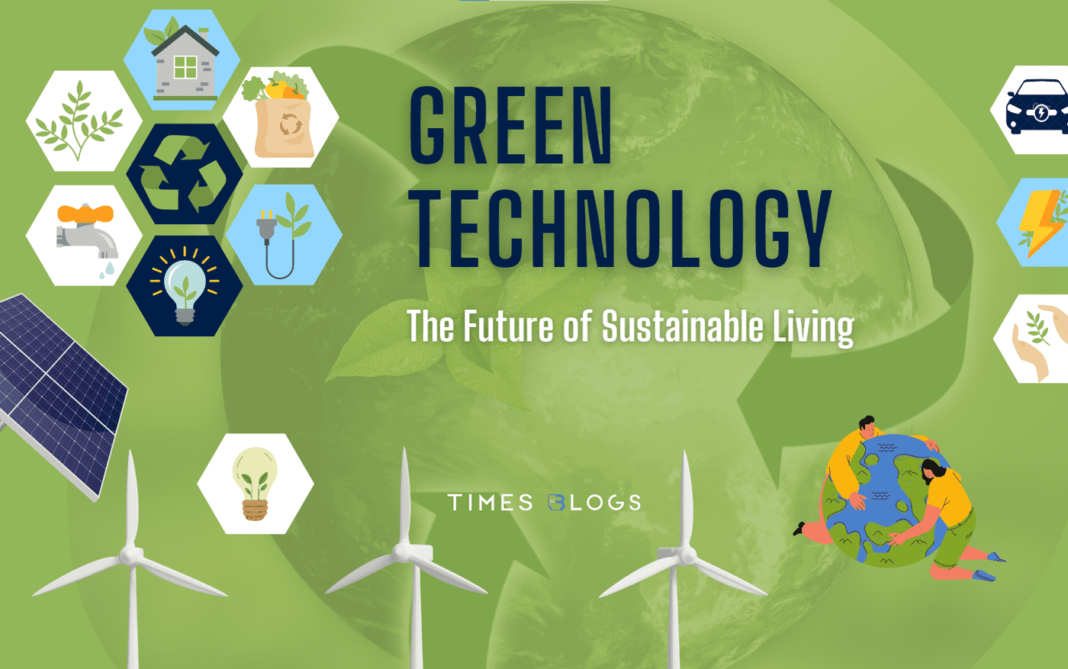Introduction
In today’s rapidly evolving world, the term “Green Technology” has become synonymous with hope, innovation, and responsibility. It represents a burgeoning field that integrates technological advancements with the principles of environmental stewardship. But what exactly is Green Technology, and why has it become central to discussions about the future?
Definition of Green Technology
Green Technology, often referred to as clean technology or environmental technology, is a wide-ranging field that employs innovative techniques, tools, and methodologies to create products and services that have a minimal or beneficial impact on the environment. Unlike conventional technologies, Green Technology emphasizes renewable resources, energy efficiency, and waste reduction. From solar-powered energy systems to electric vehicles and biodegradable materials, it’s all about harnessing the power of science and innovation to work in harmony with nature.
Importance of Sustainability
Sustainability isn’t just an abstract concept; it’s a fundamental necessity for our survival and well-being. Our current consumption patterns and reliance on non-renewable resources have led to unprecedented environmental challenges, such as climate change, deforestation, and pollution. Green Technology serves as a bridge towards a more sustainable way of living, balancing our technological needs with environmental protection. It’s about creating a world where economic growth and development do not come at the expense of our planet’s health.
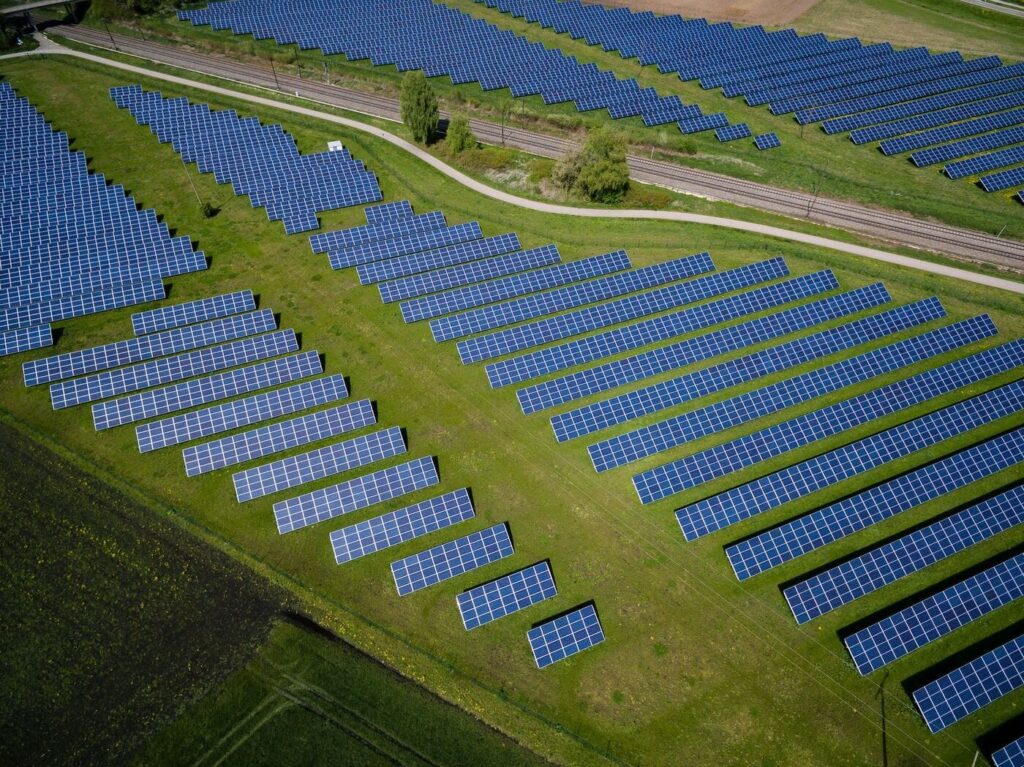
Preview of Green Technology as the Future of Sustainable Living
Green Technology is not a fleeting trend; it’s the cornerstone of our future. As global awareness about environmental issues grows, so does the demand for solutions that are both progressive and ecologically responsible. Governments, corporations, and individuals are increasingly recognizing the need to invest in Green Technology, from renewable energy to waste management and beyond. The future of sustainable living relies on our collective ability to innovate and adapt, making Green Technology not just a choice but a vital path forward.
Table of Contents
Benefits of Green Technology
Green Technology is more than a novel concept; it’s a tangible solution that is transforming the way we interact with the world around us. Let’s explore some of the key benefits that make Green Technology indispensable in our pursuit of a more sustainable future.
Environmental Impact
The core philosophy of Green Technology is to minimize harm to the environment. Unlike traditional methods that may rely on burning fossil fuels, emitting harmful chemicals, and contributing to deforestation, Green Technology offers a more conscientious approach:
- Reduction of Pollution: By utilizing clean energy sources like solar and wind, harmful emissions are minimized.
- Conservation of Resources: By employing recycling technologies and using sustainable materials, natural resources are preserved.
- Protection of Ecosystems: Eco-friendly practices safeguard various ecosystems, promoting biodiversity and natural balance.
- Mitigation of Climate Change: Through reduced emissions and conscious practices, Green Technology helps mitigate the effects of climate change.
- Enhancement of Air and Water Quality: By minimizing pollutants and managing waste more effectively, Green Technology enhances the quality of air and water.
Energy Efficiency
Energy efficiency represents one of the core principles of Green Technology:
- Utilizing Renewable Energy: Technologies such as solar panels and wind turbines harness inexhaustible natural sources, reducing dependence on non-renewable fuels.
- Maximizing Efficiency: Through energy-efficient appliances and intelligent design, energy consumption is optimized.
- Promoting Sustainable Transportation: The development of electric vehicles and other green transportation methods reduces energy consumption.
- Improving Building Performance: Green buildings that employ energy-efficient materials and design reduce energy use and create more sustainable living spaces.
Economic Advantages
While Green Technology’s environmental and energy-related benefits are evident, its economic advantages are equally compelling:
- Cost Savings: Long-term savings in energy bills, maintenance, and resource utilization outweigh the higher initial investment.
- Job Creation: A growing field, Green Technology offers new opportunities for employment and innovation.
- Global Competitiveness: The adoption of Green Technology practices positions businesses as leaders in an increasingly sustainability-conscious market.
- Enhanced Energy Security: By reducing dependence on imported fossil fuels, Green Technology contributes to national and economic security.
- Boosting Local Economies: Investment in local Green Technology projects and industries supports and strengthens community economies.
Examples of Green Technology
Green Technology is a broad field, encompassing various innovative solutions that prioritize sustainability and efficiency. Here, we will examine some of the prominent examples that are transforming the way we consume energy, travel, and manage waste.
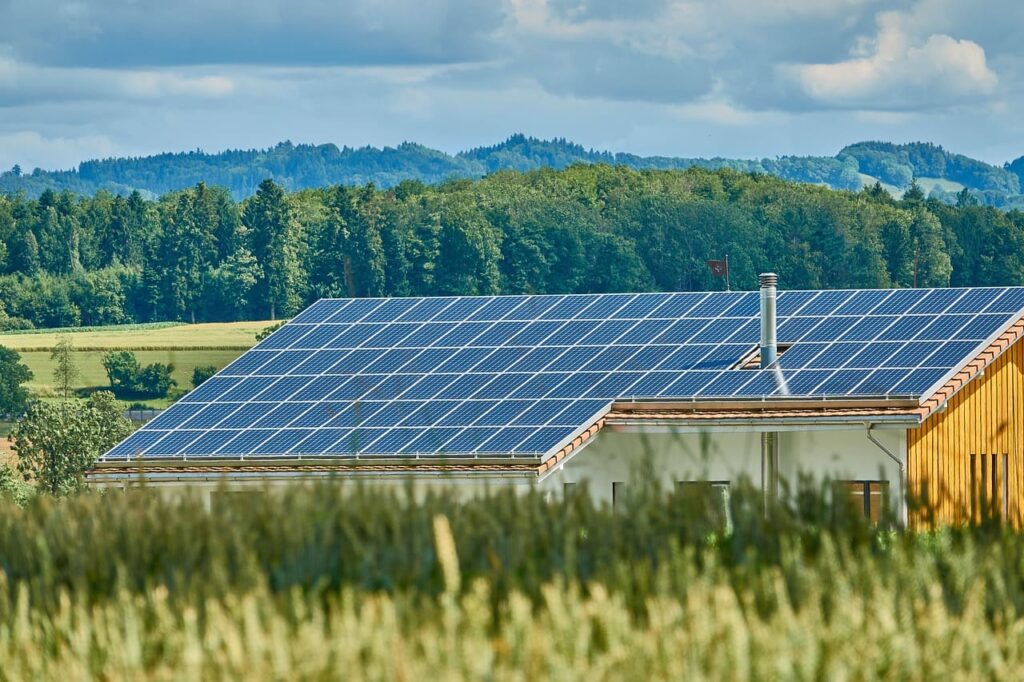
Solar Energy
Harnessing the power of the sun, solar energy has become a symbol of Green Technology:
- Solar Panels: By converting sunlight into electricity, solar panels offer a renewable and clean energy source for homes and businesses.
- Solar Water Heaters: Using solar energy to heat water is an energy-efficient way to provide hot water without relying on traditional energy sources.
- Solar-Powered Appliances: From street lights to charging stations, solar-powered appliances are spreading across various domains.
Solar energy is one of the most prominent examples of Green Technology, transforming sunlight into usable electricity. This clean and renewable energy source relies on photovoltaic (PV) cells to capture solar rays and convert them into electrical power.
The applications of solar energy are vast and varied, including:
- Residential Use: Homeowners can install solar panels on rooftops to generate electricity, reducing reliance on conventional energy sources and lowering utility bills.
- Commercial Installations: Large-scale solar farms and commercial installations provide substantial power, contributing to a greener energy grid.
- Solar-Powered Transportation: Vehicles such as solar-powered cars and boats showcase the potential for sustainable transportation solutions.
- Portable Solar Devices: Solar energy is harnessed in smaller devices like solar-powered chargers, garden lights, and portable generators, offering convenient and eco-friendly options.
Solar energy’s adaptability and sustainability make it an essential component of the global movement toward cleaner and more responsible energy consumption. It stands as a testament to the power of innovation and the sun’s endless potential to fuel our lives in harmony with the environment.

Wind Energy
Wind Energy leverages the natural power of wind to generate electricity:
- Wind Turbines: These structures capture wind energy and convert it into electrical power, offering a renewable energy option.
- Wind Farms: Large-scale wind farms generate significant amounts of electricity, powering entire communities with green energy.
- Offshore Wind Energy: By situating wind turbines in offshore locations, even more energy can be harnessed due to consistent wind patterns.
Wind energy, another remarkable example of Green Technology, harnesses the natural wind currents to generate electricity. By converting the kinetic energy of the wind into mechanical power, wind energy offers a renewable and clean alternative to fossil fuels.
The applications of wind energy include:
- Wind Farms: Large-scale wind farms, consisting of numerous wind turbines, are capable of generating significant amounts of electricity, contributing to national power grids.
- Community Wind Projects: Smaller wind projects can be developed by communities to provide local power, enhancing energy independence and supporting local economies.
- Offshore Wind Power: Wind turbines installed in offshore locations capture the powerful and consistent winds over the ocean, generating substantial energy in a space-efficient manner.
- Hybrid Systems: Wind energy can be combined with other renewable sources like solar power to create hybrid systems, offering a more consistent and versatile energy supply.
The growth of wind energy globally signifies a shift towards sustainable and responsible power generation. Its ability to tap into a natural and inexhaustible resource embodies the principles of Green Technology, paving the way for a future where our energy needs are met in harmony with the planet.
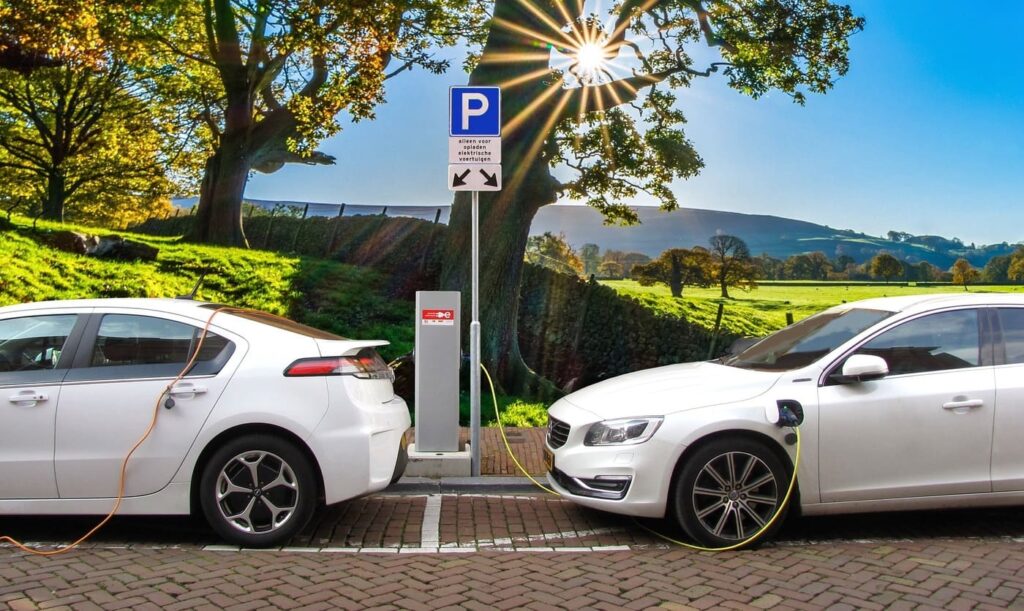
Electric Vehicles (EVs)
Electric Vehicles represent the future of transportation, minimizing emissions and dependency on fossil fuels:
- Battery Electric Vehicles (BEVs): Running solely on electric power, BEVs produce zero emissions, contributing to cleaner air.
- Plug-in Hybrid Electric Vehicles (PHEVs): These vehicles combine electric power with conventional fuels, offering flexibility and reduced emissions.
- Electric Buses and Trains: Public transportation is also embracing electric technology, providing greener options for commuters.
Electric vehicles (EVs) represent a groundbreaking advancement in Green Technology, offering a sustainable alternative to traditional gasoline-powered vehicles. By utilizing electric power, often derived from renewable energy sources, EVs reduce the reliance on fossil fuels and significantly diminish harmful emissions.
The applications and benefits of electric vehicles include:
- Passenger Cars: From compact cars to luxury models, EVs are available in various forms for everyday use, making eco-friendly transportation accessible to a wide audience.
- Public Transportation: Electric buses and shuttles are transforming public transportation systems, reducing urban pollution and energy consumption.
- Commercial Fleets: Businesses are increasingly adopting electric trucks and vans for deliveries and services, aligning with sustainability goals.
- Charging Infrastructure: The growth of charging stations, including solar-powered options, supports the expanding EV market and facilitates convenient recharging.
Electric vehicles are more than a technological novelty; they symbolize a shift in societal values toward environmental responsibility and sustainability. By embracing EVs, we are not just driving towards a destination but steering towards a future where technology and nature travel hand in hand.

Waste Management Solutions
Green Technology also plays a crucial role in waste management, promoting recycling and reducing pollution:
- Recycling Technologies: New technologies are enabling more efficient recycling of materials like plastics, metals, and paper.
- Composting Solutions: Advanced composting systems help in converting organic waste into nutrient-rich soil.
- Waste-to-Energy Plants: By converting waste into energy, these plants offer a double advantage of waste reduction and energy generation.
Waste management solutions are a vital aspect of Green Technology, focusing on the sustainable handling, disposal, and recycling of waste. These practices go beyond mere waste elimination; they represent a comprehensive approach to reducing environmental impact, conserving resources, and promoting a circular economy.
The applications and innovations in waste management solutions include:
- Recycling Programs: Advanced sorting and processing technologies enable the recycling of various materials such as plastics, metals, glass, and paper, transforming waste into valuable resources.
- Composting: Organic waste composting turns food and yard waste into nutrient-rich soil, supporting agriculture and reducing landfill use.
- Waste-to-Energy Plants: Converting waste materials into energy through incineration or anaerobic digestion helps produce electricity and heat, offering a renewable energy source.
- Smart Collection and Monitoring: Modern waste management solutions employ sensors and data analytics to optimize collection routes and monitor waste levels, enhancing efficiency and reducing emissions.
- Eco-Friendly Packaging: Innovations in packaging materials, including biodegradable and reusable options, are part of a broader waste reduction strategy, aligning with sustainable consumption patterns.
Waste management solutions embody the principles of Green Technology by turning challenges into opportunities. Through thoughtful design, innovation, and collaboration, waste management is evolving from a necessary task into a platform for environmental stewardship and sustainable development.
Challenges and Solutions in Implementing Green Technology
While Green Technology offers promising pathways to a more sustainable future, its widespread adoption is not without challenges. Below, we examine some of these hurdles and explore potential solutions to enable a smoother transition toward a greener world.
Initial Costs
Challenge:
- High Upfront Costs: The implementation of Green Technology often involves substantial initial investment in equipment and infrastructure, making it financially daunting for individuals, businesses, and governments.
Solution:
- Financial Incentives and Subsidies: Governments and financial institutions can offer incentives, grants, or subsidies to offset the initial costs, making Green Technology more accessible.
- Flexible Financing Options: Providing flexible financing and loan options can facilitate adoption, especially for small and medium enterprises.
Technological Barriers
Challenge:
- Lack of Advanced Technology: In some regions, advanced Green Technology might be scarce or underdeveloped, hindering its implementation.
Solution:
- Investment in Research and Development: Fostering innovation through research grants and collaboration between academia and industry can accelerate technological advancements.
- Technology Transfer and Collaboration: Encouraging international collaboration and technology sharing can help spread cutting-edge Green Technology across borders.
Policy and Regulation
Challenge:
- Inconsistent or Unsupportive Policies: A lack of consistent and supportive governmental policies can create uncertainty and impede the growth of Green Technology.
Solution:
- Clear and Supportive Legislation: Governments must enact clear regulations and policies that promote Green Technology, offering stability and encouragement for investors and adopters.
- International Agreements and Standards: Collaborating on global standards and agreements can foster a unified approach to implementing Green Technology.
Public Awareness and Education
Challenge:
- Limited Understanding and Acceptance: Misconceptions and lack of awareness about Green Technology can lead to resistance or indifference among the public.
Solution:
- Education and Outreach Programs: Implementing educational campaigns and community outreach can increase understanding and acceptance of Green Technology.
- Collaboration with Media and Influencers: Partnering with media outlets and influencers can amplify the message and reach a broader audience.
Infrastructure Challenges
Challenge:
- Inadequate Infrastructure: Lack of proper infrastructure for Green Technology, such as charging stations for electric vehicles or recycling facilities, can hinder its broad adoption.
Solution:
- Strategic Infrastructure Development: Planning and investing in necessary infrastructure will provide a solid foundation for Green Technology implementation.
- Public-Private Partnerships: Collaboration between governments and private sectors can fast-track the development of essential infrastructure.
Social Acceptance and Cultural Barriers
Challenge:
- Resistance to Change: Cultural norms and resistance to new technologies can create obstacles in accepting and implementing Green Technology.
Solution:
- Community Engagement: Involving communities in the decision-making process and creating solutions that align with local traditions can foster acceptance.
- Positive Role Models and Success Stories: Showcasing successful implementations and role models can inspire others to embrace Green Technology.
Supply Chain and Industry Alignment
Challenge:
- Misalignment in Supply Chain: A lack of synchronization between different players in the supply chain can lead to inefficiencies and challenges in adopting Green Technology.
Solution:
- Cross-Sector Collaboration: Facilitating communication and alignment across different sectors can ensure a smooth transition to Green Technology.
- Industry Standards and Best Practices: Developing and following common standards and best practices can streamline the integration of Green Technology.
Environmental Considerations
Challenge:
- Potential Environmental Impact: Some Green Technologies might have unintended environmental consequences, such as resource extraction for renewable energy equipment.
Solution:
- Comprehensive Environmental Assessments: Conducting thorough assessments of the environmental impact can guide responsible implementation.
- Sustainable Design and Sourcing: Emphasizing sustainable practices in design and material sourcing can mitigate potential negative impacts.
Green Technology in Different Industries
Green Technology is not confined to a single domain. Its principles and innovations are being applied across various industries, reflecting a growing commitment to sustainability and environmental stewardship. Let’s explore how Green Technology is transforming some key sectors.

Agriculture
In the agricultural sector, Green Technology is playing a vital role in enhancing productivity while minimizing environmental impact:
- Precision Farming: Utilizing data analytics and sensors, farmers can optimize irrigation, fertilization, and pest control, reducing waste and conserving resources.
- Sustainable Water Management: Innovations like drip irrigation and rainwater harvesting help in efficient water use.
- Renewable Energy Sources: Solar and wind energy can power farm operations, cutting down on emissions.
Construction
Green Technology is revolutionizing the construction industry by promoting sustainable practices:
- Green Building Materials: Using recycled or sustainable materials reduces the environmental footprint of construction projects.
- Energy-Efficient Design: Implementing energy-efficient building designs reduces energy consumption and costs.
- Waste Reduction and Recycling: Advanced waste management techniques enable recycling and minimize construction waste.
Manufacturing
In manufacturing, Green Technology is driving efficiency and sustainability:
- Eco-Friendly Manufacturing Processes: Implementing cleaner production processes reduces emissions and waste.
- Energy-Efficient Machinery: Utilizing energy-efficient machines and automation lowers energy consumption.
- Recycling and Reuse: Encouraging recycling and reusing materials minimizes waste and promotes a circular economy.
Transportation
Transportation is another sector where Green Technology is making significant strides:
- Electric and Hybrid Vehicles: The adoption of electric and hybrid vehicles reduces reliance on fossil fuels, cutting emissions.
- Smart Transportation Systems: Intelligent traffic management and public transportation systems enhance efficiency and reduce congestion.
- Alternative Fuels: The development and use of biofuels and hydrogen fuels provide cleaner alternatives to traditional gasoline and diesel.
Healthcare
The healthcare industry is incorporating Green Technology to minimize waste and energy consumption:
- Energy-Efficient Facilities: Hospitals and healthcare centers are using energy-efficient lighting, HVAC systems, and appliances to reduce energy use.
- Waste Reduction and Recycling: Implementing strategies to minimize medical waste and promote recycling, especially for non-hazardous materials.
- Telemedicine: By offering remote consultations, telemedicine reduces the need for transportation, contributing to reduced emissions.
Information Technology (IT)
Green Technology is influencing the IT sector by promoting sustainability:
- Green Data Centers: Utilizing energy-efficient cooling systems, servers, and power supplies to minimize energy consumption in data centers.
- E-Waste Recycling: Encouraging the recycling and proper disposal of electronic waste, including computers, smartphones, and other devices.
- Cloud Computing: By using cloud-based solutions, companies can reduce the need for physical hardware, conserving energy and materials.
Tourism and Hospitality
In the tourism and hospitality sector, Green Technology is enhancing sustainability:
- Eco-Friendly Accommodations: Many hotels are adopting energy-efficient appliances, water-saving practices, and sustainable materials.
- Sustainable Travel Options: Encouraging eco-friendly travel experiences such as bicycle tours, walking tours, and public transportation.
- Local and Sustainable Food Sources: Sourcing food locally and focusing on sustainable practices reduces transportation emissions and supports local communities.
Education
Educational institutions are also embracing Green Technology:
- Green Campuses: Many universities and schools are incorporating energy-efficient buildings, renewable energy, and waste reduction practices.
- Sustainable Education Programs: Offering courses and programs that focus on sustainability and environmental stewardship.
- Digital Learning Platforms: E-learning reduces the need for physical resources like paper and transportation, contributing to sustainability.
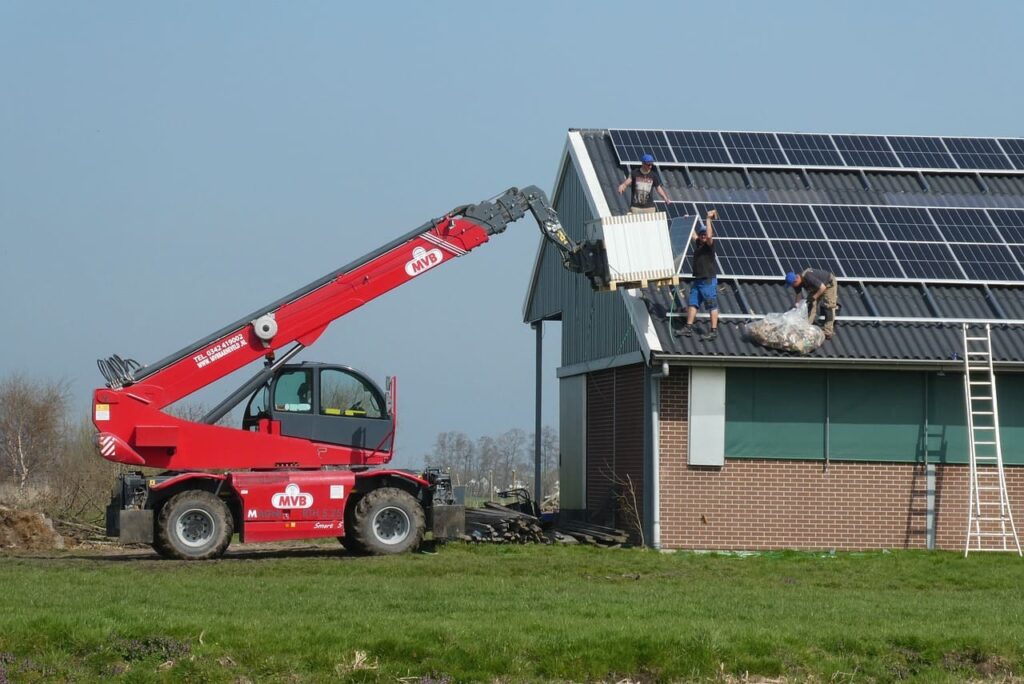
The Future of Green Technology
As the world grapples with pressing environmental challenges, Green Technology emerges as a beacon of hope and a path towards a sustainable future. Let’s explore what the future holds for Green Technology by examining some of the key areas that will shape its trajectory.
Upcoming Trends
The landscape of Green Technology is ever-evolving, with several exciting trends on the horizon:
- Artificial Intelligence (AI) in Sustainability: AI and machine learning are being used to optimize energy usage, predict maintenance needs, and enhance efficiency across various industries.
- Energy Storage Solutions: Advanced battery technologies and energy storage solutions are being developed to make renewable energy sources more reliable and practical.
- Circular Economy: Emphasizing the reuse, recycling, and remanufacturing of products, the circular economy model promotes sustainability across the entire lifecycle of goods.
- Smart Cities: The integration of Green Technology into urban planning will foster the growth of smart cities, where energy efficiency, waste reduction, and environmental stewardship are at the core of development.
- Integration of Internet of Things (IoT): IoT devices are helping to create interconnected, smart, and energy-efficient systems across various sectors, from homes to industrial processes.
- Microgrid and Decentralized Energy Systems: This trend emphasizes local energy production and distribution, allowing communities to be more resilient and efficient.
- Green Tech in Space Exploration: Utilizing Green Technology for space missions, including renewable energy sources and waste reduction technologies, is an exciting frontier in sustainable exploration.
Government Initiatives
Governments play a crucial role in propelling Green Technology forward:
- Legislation and Regulation: By enacting supportive policies, governments can create a favorable environment for Green Technology development and adoption.
- Subsidies and Incentives: Financial support in the form of grants, tax incentives, and subsidies can make Green Technology more accessible and competitive.
- International Collaboration: Joining forces with other nations to set global standards and share technologies will foster a united approach to sustainability.
- Public Education and Awareness: Governments can lead campaigns to educate the public about Green Technology and its benefits, encouraging more widespread adoption.
- Support for Green Tech Education: Governments can invest in educational programs that cultivate skills and interest in Green Technology, fostering the next generation of innovators.
- Urban Planning and Infrastructure Support: Governments can promote Green Technology by incorporating it into urban planning and public infrastructure projects, such as public transportation and green spaces.
- Climate Agreements and Commitments: By actively participating in international climate agreements and setting concrete goals, governments demonstrate commitment and leadership in driving Green Technology.
Private Sector Investment
The private sector’s investment and involvement are instrumental in driving Green Technology to new heights:
- Corporate Sustainability Goals: Many companies are setting ambitious sustainability targets, spurring innovation and investment in Green Technology.
- Venture Capital and Financing: Increased funding from venture capitalists and financial institutions is fueling startups and new ventures in the Green Technology space.
- Partnerships and Collaboration: Private sector collaboration with academia, governments, and other industries will accelerate research, development, and implementation of Green Technology.
- Market-Driven Solutions: By aligning Green Technology with consumer demands and market trends, the private sector can make sustainable solutions more appealing and commercially viable.
- Focus on Social Responsibility: Many companies are emphasizing corporate social responsibility (CSR) that aligns with Green Technology, attracting conscientious consumers and investors.
- Innovation Hubs and Incubators: Creating spaces and programs that support startups and innovators in Green Technology can stimulate creativity and accelerate technological advancements.
- Embracing Supply Chain Sustainability: Corporations are looking to Green Technology to make their supply chains more transparent, ethical, and sustainable, creating value for both business and the environment.

Conclusion
The journey through the world of Green Technology paints a picture of innovation, commitment, and hope. From its definition and importance to its multifaceted applications in various industries, Green Technology stands as a testament to human ingenuity and our desire to live in harmony with our planet.
We have explored its profound impact on the environment, energy efficiency, economic advantages, and more. The examples of Green Technology, ranging from solar energy to waste management solutions, reveal its practical and transformative potential. While there are challenges in its implementation, they are not insurmountable. Governments, private sectors, and individuals are aligning efforts to overcome these barriers.
With the future promising exciting trends, robust government initiatives, and substantial private sector investment, Green Technology is not just an option but a necessity for sustainable living.
Call to Action
But the story of Green Technology does not end here. It’s a continuous journey, and you are a vital part of it. Whether you’re a policy-maker, business leader, innovator, or conscious consumer, your choices and actions matter.
- Educate Yourself: Learn more about Green Technology and how you can incorporate it into your daily life or business practices.
- Invest in Sustainability: Support products, services, and companies that align with Green Technology principles.
- Advocate for Positive Change: Raise awareness, support policies, and contribute to initiatives that foster the growth of Green Technology.
- Collaborate and Network: Join communities, forums, or local groups that focus on sustainability and Green Technology. Collaboration fosters innovation and change.
- Reduce, Reuse, Recycle: Embrace these fundamental principles in your daily life. Simple actions can have significant impacts, and Green Technology often starts at home.
The future of sustainable living is in our hands, and Green Technology is the key. Together, we can create a world where technology serves not only our needs but also the well-being of the Earth and future generations. The time to act is now. Embrace Green Technology, embrace the future.


